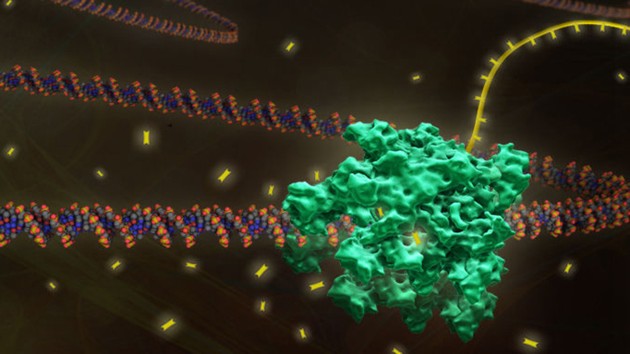Collection |
Collections
Filters
-
Collection Type
-
-
Collection |
 Genetic and epigenetic insights into autoimmunity
Genetic and epigenetic insights into autoimmunity
Autoimmunity is an underlying cause of many diseases. This collection of Research, Reviews and News articles from several Nature journals covers the latest advances in genetic and epigenetic research into autoimmunity and autoimmune diseases.
Image: Susanne Harris -
Collection |
 The FANTOM5 Project
The FANTOM5 Project
A collection of research and data papers published across Nature Research, from the fifth cycle of the Functional ANnoTation Of the Mammalian genome project (FANTOM).
Image: Richard Janissen - TU Delft -
Collection |
 Cancer Evolution
Cancer Evolution
In this collection, the cancer editorial community of the Nature journals presents the most recently published articles on cancer evolution. The topic is discussed from different angles (preclinical, translational and clinical), and across a range of tumour types.
-
Collection |
 TGCA pan-cancer analysis
TGCA pan-cancer analysis
Genomic alterations in diverse cell types at different sites in the body give rise to hundreds of different forms of cancer, and the ways in which these changes result in tumors with different biology, pathology and treatment strategies are beginning to be characterized.
-
-
Collection |
Collections: RNAi
Gene silencing through RNA interference (RNAi) has become the tool of choice for genome-scale, high-throughput analyses of gene function and has had a tremendous impact on science and drug discovery. Now, RNAi libraries targeting whole genomes or functionally related pathways permit systematic screens for clinically relevant components of cellular networks. Advances in rational design, sequence selection strategies and delivery options have substantially improved the utility of short interfering RNA (siRNA), short hairpin RNA (shRNA) and microRNA (miRNA) tools for screening.
-
Collection |
MicroRNA and Cancer
MicroRNAs (miRNAs) — an abundant class of small non–protein–coding regulators of gene expression — play an important role in tumorigenesis and, depending on their targets, can function as tumour suppressors or oncogenes. Crucially, miRNA–expression profiling of human tumours has identified signatures associated with diagnosis, staging, progression, prognosis and response to treatment.
-
Collection |
Question of the Year
The sequencing of the equivalent of an entire human genome for $1,000 has been announced as a goal for the genetics community, and new technologies suggest that reaching this goal is a matter of when, rather than if. What then? In celebration of its upcoming 15th anniversary, Nature Geneticsasked prominent geneticists to weigh in on this question: what would you do if this sequencing capacity were available immediately?

 Gut Microbiota
Gut Microbiota
 iCOGS
iCOGS